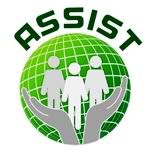Asia Society for Social Improvement and Sustainable Transformation (ASSIST) News Commentary by Paula Bianca Lapuz
Consistent with the upward trend of the past months, with males having recorded the most number of cases, the latest government reports on HIV incidence in the Philippines raise red flags and demand greater support for prevention programs (Tubeza 2012).
According to the Department of Health, HIV (Human Immunodeficiency Virus) cases in the Philippines have surged by as much as 90% between November 2010 and November 2011. Majority of inflicted individuals acquired the virus through sexual contact (MSM/Men having Sex with Men) and sharing of needles. Mother-to-child transmission rates remain to be negligible (Tubeza 2012).
The Joint United Nations Program on HIV/AIDS or UNAIDS has noted that while elsewhere HIV/AIDS growth rates have declined, the Philippines and Bangladesh have posted at least 25% increase from 2001 to 2009 (UNAIDS 2011). This is why, UNAIDS Manila Head Teresita Marie Bagasao pressed the government for immediate and decisive actions to address the further spread of the disease, blaming severe underfunding for the unabated growth.[1]
The Philippine HIV and AIDS Registry under the Department of Health (DOH) National Epidemiology Center reports that from 1984 to 2011[2] there have been 940 AIDS cases, 682 of which were males (Philippine HIV and AIDS Registry 2011).
DOH runs an HIV/STI (Sexually Transmitted Infection) Prevention program which aims to empower communities and individuals through proper sanitary education and adequate health care services. However, this has obviously fallen short of its targets.
What went wrong?
Sectors
The government has evidently failed in assessing the gravity of the situation among homosexuals and drug users as HIV transmission among these groups become more rampant than among female sex workers (Macaraig 2011). Focus on prostituted women encouraged social workers and advocates to find ways to introduce “innovative practices” in sex work which later proved helpful in radically decreasing possible new infections in Angeles City, Pampanga (ABS-CBN News 2011).
Budget
The budget for the prevention program is meager. Bagasao mentioned that almost 80% of the funds came from different multilateral agencies. DOH notes that it can only make ends meet by trying to maximize available resources – just a little over half of the needed funds (Macaraig 2011).
Analysis
The government will most likely have to stretch the budget even more. Bagasao states that the government should decide which to prioritize: prevention or treatment? But as DOH Assistant Secretary Eric Tayag puts it, “It is a race against time because the more cases there are; the more different kinds of financial support are needed in the long run.”
Although the proportion of individuals diagnosed with HIV/AIDS (7,884) is relatively small compared to the total population of the country (94 million), the fact remains that Philippines is among the few countries whose HIV rates have steadily gone up in the last two decades (Macaraig 2011).
With this in mind, there is a need to identify more mechanisms to address the worsening status of HIV/AIDS in the Philippines, which is listed as part of the Millennium Development Goals. The government has to create aggressive and dynamic information-education programs that can be integrated with the high school and college curricula. This way, more people will be aware of preventive practices.
Indeed, the issue also brings to the fore the need for a reliable and effective sex education program which is part of the Reproductive Health bill pending before the congress. In particular, it will be challenging to reach drug users and homosexuals, since they have not been the target market of the past programs.
Other line agencies and local government units must scale up their efforts to contribute to the DOH initiatives as well. Truly, for the HIV/STI prevention program to succeed, the approach must be holistic, strategic, and pro-active.#
Works cited:
ABS-CBN News. ABS-CBN Lifestyle. January 23, 2011. http://www.abs-cbnnews.com/lifestyle/01/22/11/safe-sex-101-how-put-condom-mouth (accessed January 02, 2012).
Macaraig, Mynardo. ABS-CBN Lifestyle. December 23, 2011. http://www.abs-cbnnews.com/lifestyle/12/03/11/philippines-struggles-aids (accessed January 02, 2012).
Philippine HIV and AIDS Registry . Newly Diagnosed HIV Cases in the Philippines. Update, Department of Health , 2011.
Tubeza, Philip C. Philippine daily Inquirer/Latest Stories. January 02, 2012. http://newsinfo.inquirer.net/121121/hiv-cases-rose-89-in-november%E2%80%94doh (accessed January 02, 2012).
UNAIDS. HIV in Asia and the Pacific: GETTING TO ZERO. Update, UNAIDS, 2011.


Leave a comment